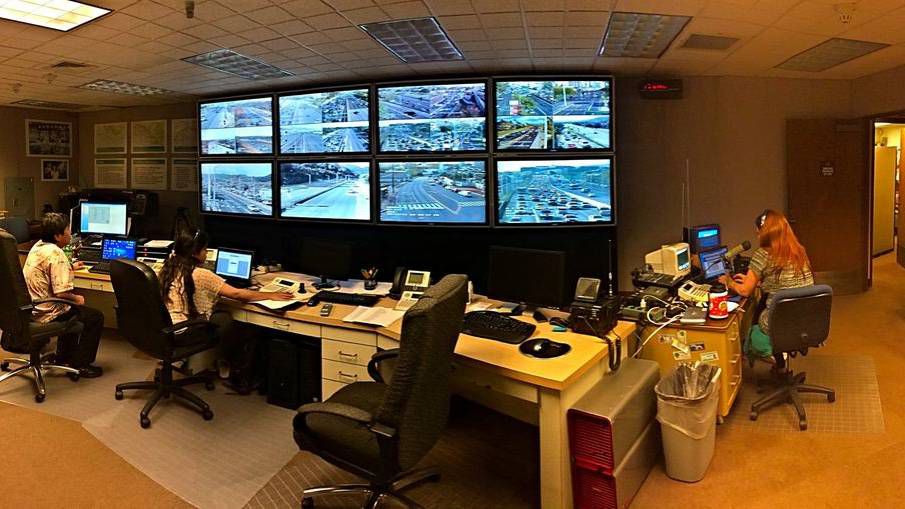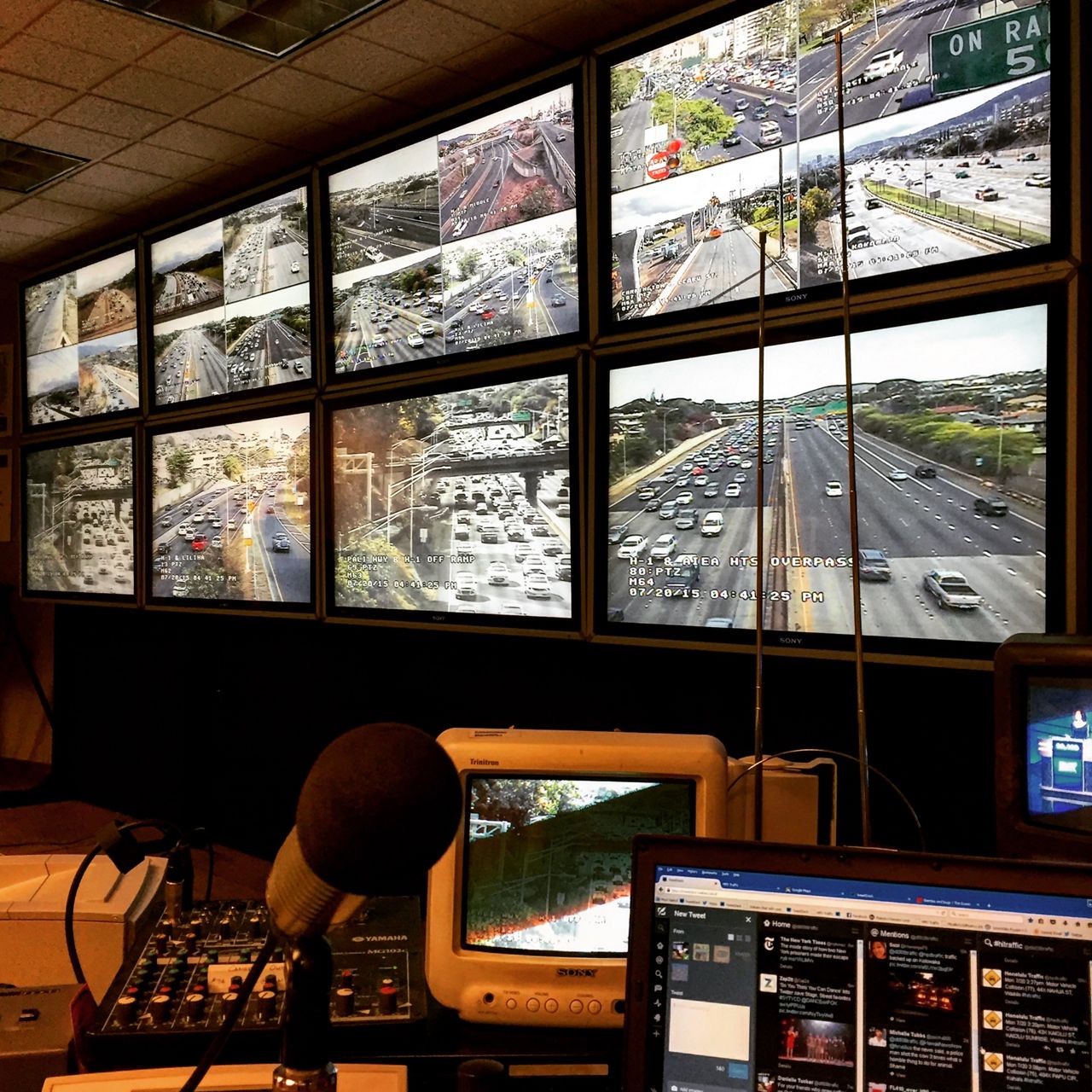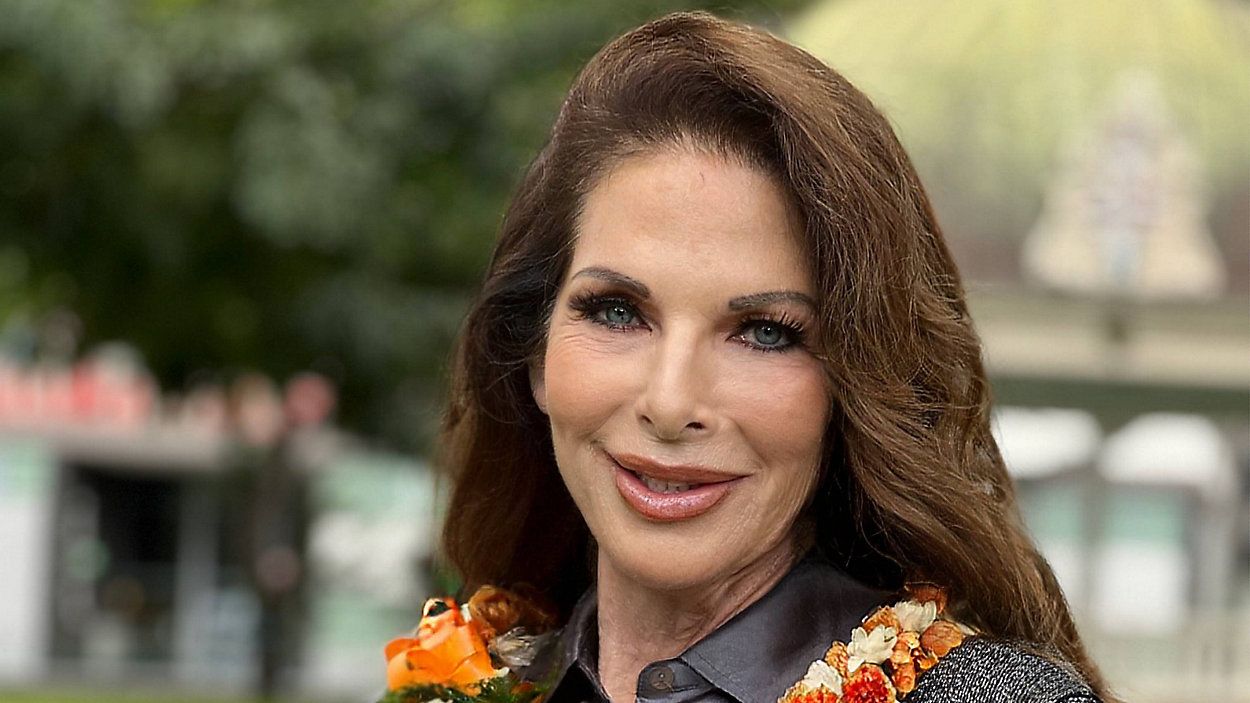HONOLULU — The voice of Danielle Tucker is iconic for Oahu residents, as she navigates us through the island’s constant traffic problems and ends her reports with the phrase “from the City and County of Honolulu’s Traffic Management Center, I’m Danielle Tucker.”
During the first week of January, she was laid off — along with 19 other Summit Media employees — from her radio job as the island’s traffic reporter, leaving many locals devastated.
Tucker said people who listened to her traffic reports would stop her at the grocery store, bank, on the street or in parking lots after recognizing her voice.
“‘You saved me. You rescued me. Because of you, I didn’t get caught in that.’ Those three statements have been said to me over and over and over again,” said Tucker in an interview with Spectrum News Hawaii on Tuesday. “When I feel like I’m not doing anything for the planet, somebody walks up to me … and says, ‘You rescued me today. I did what you told me to do, and I didn’t get stuck in it, and I got to my destination on time.”
People were stunned to hear Tucker was laid off, because they rely on her traffic reports. “‘Who’s going to tell us which way to go?’” they said to her.
Tucker’s traffic reports were played on six different radio stations: Hawaiian 105 KINE-FM, KCCN-FM 100, Power 104.3 FM, KRATER 96 FM, KKNE 940 AM and KPRP 650 AM.
On KRATER and Hawaiian 105, Tucker delivered her traffic reports live starting at 5 a.m., and every five minutes she would switch between the two stations.
“It got a little bit shaky if one station was running late and the other one was running early,” she said.
While she was talking to one station, Tucker could tell if the second was going to ask her to start her traffic report because she was listening to both on her headset. When the stations did overlap, she would summarize what was happening, so the traffic report would make sense to the station that was just joining in and then she would add what she had said on the first to her close.
“I had it down to an art where I could start on one station and if another station came to me, I would just continue,” said Tucker. “Then I would do what’s called a generic out, ‘from the City and County of Honolulu’s Traffic Management Center, I’m Danielle Tucker,’ without mentioning a radio station at the end.”

On Hawaiian 105, Tucker would often make jokes with the hosts Mele Apana and Shannon Scott, although if there was an accident, she knew to maintain her composure.
“Traffic is never fun if it gets bad, and I’d have to pull myself back from fun and become much more, you know, ‘we’re not we’re not gonna laugh now kids because we’ve got somebody down — a pedestrian’s been hit.’ I wouldn’t say that, but my tone of voice said that,” Tucker explained.
The four other stations played traffic reports that Tucker recorded and put into the computer.
Tucker reported on the traffic for 20 years, sitting in the control room for the Traffic Management Center in Honolulu and looking at live footage from about 250 cameras. The Traffic Management Center was built in the late 1990s, using fiber-optic cables to bring real-time footage and data into one hub, according to Tucker. She said Mayor Jeremy Harris invited radio reporters to the Traffic Management Center to report on traffic, and in the beginning there were at least five reporters who would use the center, but by the end of Tucker’s tenure she was the only one left.
“We all had to say ‘from the City and County of Honolulu’s Traffic Management Center.’ That was our ticket in,” Tucker explained. “Every time you said a report, you had to say that it was a public service announcement.”
Tucker described seeing traffic at its worst: backed up from Honolulu into Halawa and to the west side. “That’s a horrible day,” said Tucker.
“When I started 20 years ago, the traffic getting backed up to Waikele was a really big deal,” said Tucker, while laughing. “Now it’s kind of normal for it to get backed up from the Kualakai Parkway overpass in Kapolei.”
On Oahu’s roads, Tucker has seen it all.
“The largest pile up I saw in Hawaii was a 44-car pileup on H1-H2 merge, coming Honolulu-bound direction,” said Tucker. “It was between 7:30 and 8:30. It was one of those mornings when it had rained, and then the sun came out.”
She said the sun was so blinding that while watching the traffic cameras she couldn’t make out the lines in the road, so it must have been much worse for those driving with the sun in their eyes.
“It was incredible and to see it live happening in front of me like ‘Oh my god, that’s an accident. Oh, and there’s another one and oh, my, there’s one over there.’”
Tucker said emergency responders were on the scene almost immediately, setting up triage in the zip lane in order to get people out of the traffic. Luckily, no one died in the accident.
“Our first responders are some of the most incredible people,” Tucker said in awe of the many times she had watched them over the traffic cameras, redirecting cars or saving lives.
While Tucker can report the traffic by watching the cameras, the footage doesn’t include every single spot on the road, creating blank spots in her line of vision.

“The most challenging part of my job is getting more information than what I can see,” said Tucker. “And finding out how I can get people around it and how can I tell them what’s ahead of them before they get there.”
Tucker’s childhood was spent moving all over the world, with stints in Michigan, California, Mexico and Switzerland, before landing in Hawaii to be near her paternal grandmother, who helped raise her. She attended Kaahumanu Elementary, Stevenson Intermediate, and McKinley High School.
It was in Switzerland that she was first inspired to be a reporter as she listened with her maternal grandparents to the radio at lunch.
“Nobody spoke at all at the table, and just everybody focused on listening to the news,” Tucker said about her early introduction to radio news. “When I came back to the states … I thought maybe if America understood the rest of the world a little bit better, there will be less strife in the world.”
A graduate of the University of Hawaii at Manoa, she pursued Journalism and Communications and interned at KHON2 News, KKUA and KQMQ FM, landing her first radio job as a newscaster for KQMQ, where she worked in a broom closet with a microphone in it.
Before embarking on her 20 years as a traffic reporter, she was co-host for four different news and public affairs shows, including Thompson and Tucker, and Morning Madness with Michael Qseng. Tucker said the eulogy for Qseng when he died in 2005.
As for the layoffs at Summit Media, Tucker said there was no warning. She said 20 employees out of 26 lost their jobs.
“It was shocking,” said Tucker.
Tucker’s traffic reports can still be heard on Hawaii News Now from 4-5 p.m. every 10 minutes. For the 5 p.m. newscast, Tucker does two more traffic reports at 5:10 p.m. and 5:32 p.m.
For 23 years, Tucker has also been the host of the Golf Club on Saturdays at 7 a.m., where she interviews experts on equipment, travel, food — “everything that anybody who golfs would be interested in” — which is streamed live online and can be downloaded as a podcast.
Tucker said the layoffs were so sudden that she still doesn’t know what is next for her, but at 68 she isn’t ready to retire. She described herself as in survival mode as she figures out how to get unemployment and health insurance. “Then I can look up over the waves and go, ‘What do I want to do?’”
She said her work as a traffic reporter has been meaningful because while commuters are sitting in traffic it “gives people a sense of self determination.” She also said many people told her it calms them down. “That’s really important because life is bad enough — it’s got enough surprises. We want to have an idea of what’s coming up around the next bend.”
Tucker said after the layoffs, thousands of people reached out to her with heartfelt messages.
“The amount of people who have reached out and said ‘Oh, we miss you. I miss you. I don’t know how I’m going to get work,” said Tucker. “‘How am I going to know where to go?’”
“If I had to look back, it’s been a very fulfilling career,” said Tucker.
However, she said she did have one piece of advice for young people.
“I should have walked away from a company that didn’t want to pay me what I was worth on many occasions because $42,000 a year is what I ended up having at the end,” she said about her salary.
Tucker said she is a giver, like many women, so she kept on going, but now wished she had put her foot down.
“So many people in this country are saying today, ‘Hey, this job is not fulfilling me in places where I need more support. And I’m not getting enough sleep. I’m stressed out and the money doesn’t compensate. So I’m going to walk away,” Tucker said. “I just never did, and when I would hear people say that, ‘You rescued me’ — how could I?”



